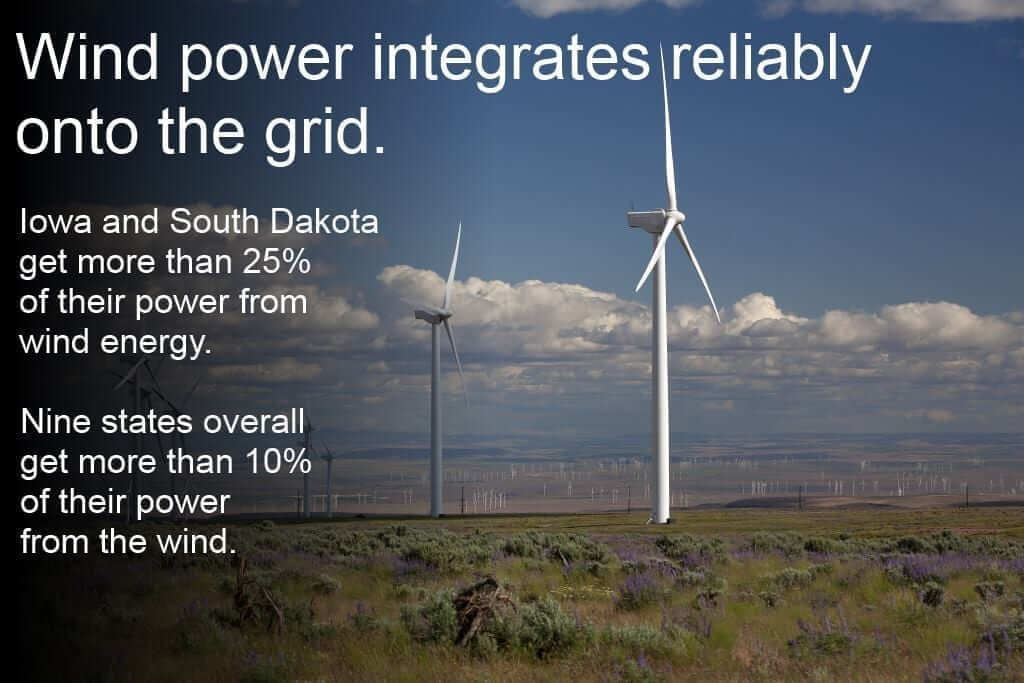New study finds that 40 percent wind energy can be reliably integrated

A new report by the Minnesota Department of Commerce found that the state could obtain 40 percent or more of its electricity from wind and solar energy, up from its current level of nearly 16 percent, without any reliability problems. This report builds on the real-world success of states like Iowa and South Dakota, which produced more than 25 percent of their electricity from wind energy last year, and Colorado and Texas, where the main power systems have hit 60 percent and nearly 40 percent wind energy at certain points in time.
Minnesota’s study has additional credibility because it was conducted in coordination with the regional independent grid operator, the Mid-continent Independent System Operator (MISO), the entity responsible for keeping the lights on in the Midwest. It looked at the full range of grid reliability needs and found building 40 percent wind and solar energy — and the associated transmission infrastructure — would cause no reliability problems.
Moreover, the study found that moving from 40 percent to 50 percent renewable energy would reduce Minnesota’s carbon dioxide emissions by more than 14 million tons. This alone would be enough to achieve more than 70 percent of the emissions reductions required from existing power plants under EPA’s Clean Power Plan. As states consider how to best reduce their pollution to comply with the EPA rule, the study’s results should reinforce what many utilities have already realized: wind energy is a reliable and cost-effective way to reduce emissions.
This study builds on other analyses from utilities, grid operators, and other experts that all found that at least 30 percent renewable energy can be integrated with no reliability issues. A report by the utilities in Nebraska found no reliability or cost obstacles to integrating 40 percent wind energy in Nebraska and the other Lower Plains states that are represented by the grid operator Southwest Power Pool. The regional grid operator for the Mid-Atlantic and Great Lakes states, PJM, also found that “with adequate transmission and ancillary services in the form of Regulation, [PJM] will not have any significant issue absorbing” 30 percent renewable energy. Similarly, the National Renewable Energy Laboratory (NREL) found no reliability concerns with integrating 30 percent wind energy in the Eastern U.S. and 33 percent renewable energy in the Western U.S. Pushing the envelope further, NREL has examined a case with 80 to 90 percent renewable energy nationwide, including biomass and hydropower, and also found no reliability concerns.
One key reason behind wind’s reliability is that as larger amounts of wind energy are added and spread over a larger area, the variability of wind energy output decreases significantly. The following chart from the Minnesota study illustrates how, while wind speeds may change significantly at one location, the total output of hundreds or thousands of turbines spread over a large area changes far more gradually.

In addition, most changes in wind energy output are canceled out by other far larger sources of variability on the power system. Data from the Texas grid operator confirm that the cost of reserve power needed to accommodate large conventional power plants’ abrupt outages is 17 times larger than wind’s contribution to the need for reserve power. MISO, the Midwest grid operator, previously noted that the impact of wind energy on its need for these operating reserves is “little to none.”
Minnesota’s study also included a higher scenario in which wind and solar energy reached 50 percent in Minnesota and 25 percent across the regional power system that includes Minnesota. That analysis found no problems for the reliability metrics it examined, including accommodating the variability of wind and solar output. The study authors noted that further analysis would be required to examine highly localized reliability issues in the 50 percent scenario, as they did not have time to fully check those localized issues. The state of Minnesota will hold a webinar today to review the results of its study in more detail.
Minnesota’s study should provide states and utilities with further evidence that as they explore ways to relaibly integrate more wind energy, the sky is the limit.


